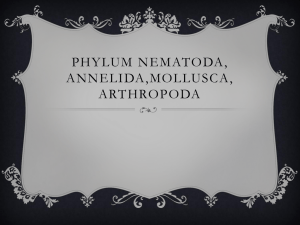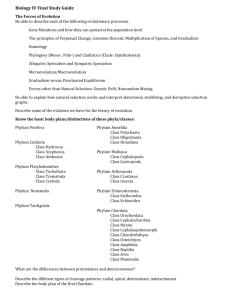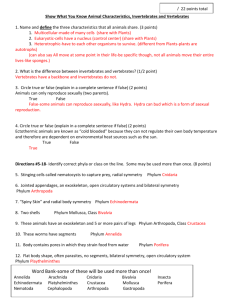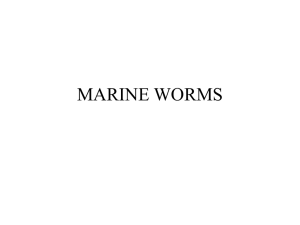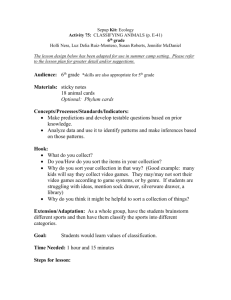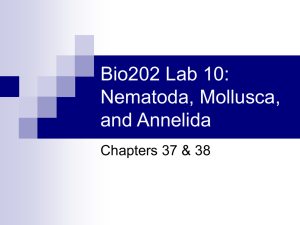Antarctic Undersea Food Web Key
advertisement
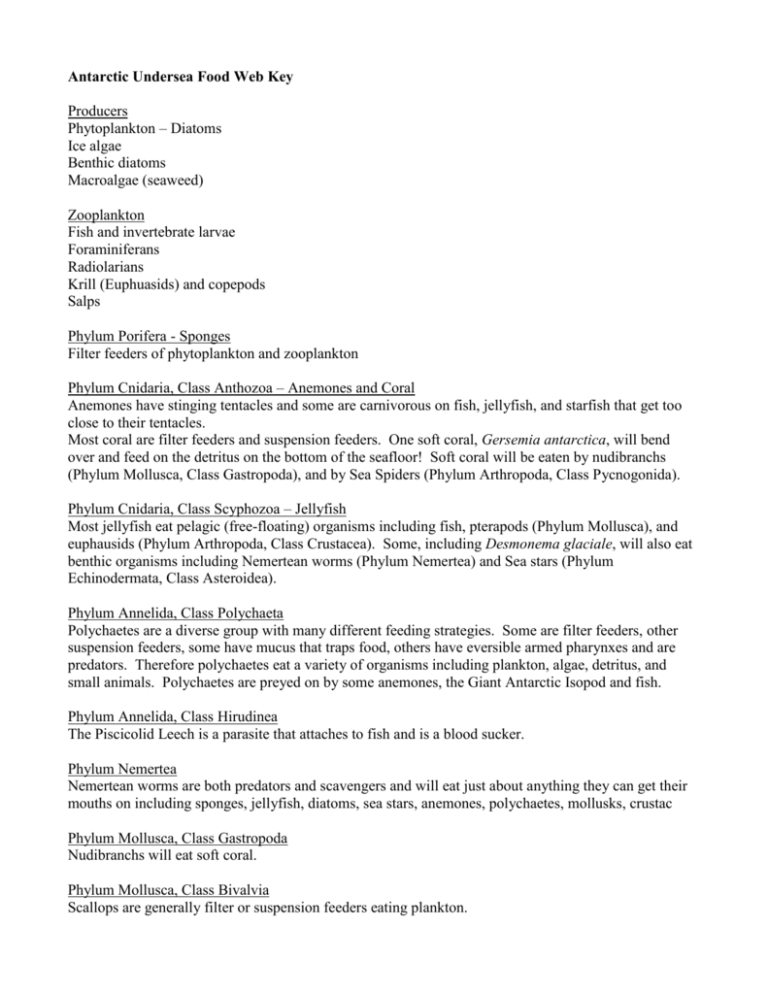
Antarctic Undersea Food Web Key Producers Phytoplankton – Diatoms Ice algae Benthic diatoms Macroalgae (seaweed) Zooplankton Fish and invertebrate larvae Foraminiferans Radiolarians Krill (Euphuasids) and copepods Salps Phylum Porifera - Sponges Filter feeders of phytoplankton and zooplankton Phylum Cnidaria, Class Anthozoa – Anemones and Coral Anemones have stinging tentacles and some are carnivorous on fish, jellyfish, and starfish that get too close to their tentacles. Most coral are filter feeders and suspension feeders. One soft coral, Gersemia antarctica, will bend over and feed on the detritus on the bottom of the seafloor! Soft coral will be eaten by nudibranchs (Phylum Mollusca, Class Gastropoda), and by Sea Spiders (Phylum Arthropoda, Class Pycnogonida). Phylum Cnidaria, Class Scyphozoa – Jellyfish Most jellyfish eat pelagic (free-floating) organisms including fish, pterapods (Phylum Mollusca), and euphausids (Phylum Arthropoda, Class Crustacea). Some, including Desmonema glaciale, will also eat benthic organisms including Nemertean worms (Phylum Nemertea) and Sea stars (Phylum Echinodermata, Class Asteroidea). Phylum Annelida, Class Polychaeta Polychaetes are a diverse group with many different feeding strategies. Some are filter feeders, other suspension feeders, some have mucus that traps food, others have eversible armed pharynxes and are predators. Therefore polychaetes eat a variety of organisms including plankton, algae, detritus, and small animals. Polychaetes are preyed on by some anemones, the Giant Antarctic Isopod and fish. Phylum Annelida, Class Hirudinea The Piscicolid Leech is a parasite that attaches to fish and is a blood sucker. Phylum Nemertea Nemertean worms are both predators and scavengers and will eat just about anything they can get their mouths on including sponges, jellyfish, diatoms, sea stars, anemones, polychaetes, mollusks, crustac Phylum Mollusca, Class Gastropoda Nudibranchs will eat soft coral. Phylum Mollusca, Class Bivalvia Scallops are generally filter or suspension feeders eating plankton. Phylum Mollusca, Class Cephalopoda Octopus will eat amphipods, polychaetes, fish, brittle stars. Giant Antarctic isopod and sea urchins. Phylum Arthropoda, Class Crustacea Crustaceans include amphipods, isopods, euphausids, shrimp, krill, ostracods, etc. One of the most diverse groups, the amphipods, vary from filter feeders to grasping prey such as polychates and even sea cucumbers. Amphipods are eaten by fish and squid. Phylum Arthropoda, Class Pycnogonida Sea spiders have been seen chewing on jellyfish that are trapped by anemones. Phylum Echinodermata, Class Asteroidea – Starfish (Sea stars) Sea stars are often predatory on scallops (Phylum Mollusca, Class Bivalvia), sponges (Phylum Porifera), Sea stars are preyed on by some anemones and by each other. Phylum Echinodermata, Class Holothuroidea – Sea cucumbers Sea cucumbers are usually suspension feeders or detritivores. Phylum Echinodermata, Class Ophiuroidea – Brittle stars Brittle stars are usually scavengers or detritivores, and they eat a wide variety of organisms including plankton, tunicates, sponges, hydroids, bryozoans, sea urchins, bivalves, crustaceans, and other brittle stars. Predators include the largest brittle star, Ophiosparte gigas, and fish. Phylum Echinodermata, Class Echinoidea – Sea Urchins Sea urchins will eat sponges, diatoms, foraminifera, bryozoans, hydrozoans, polychaetes and amphipods. Weddell seals will eat sea urchins. Phylum Echinodermata, Class Crinoidea Crinoids have feathery arms and are filter feeders of plankton. Phylum Chordata, Subphylum Vertebrata, Class Osteichthyes – Bony fish Fish in Antarctica eat amphipods, polychaetes, krill among other organisms. Fish are eaten by penguins, Weddell Seals, Sperm whales and Orcas. Phylum Chordata, Subphylum Vertebrata, Class Aves – Penguins Adelie Penguins eat primarily euphausids (70% of their diet) and also fish and squid. Adelie Penguins are eaten by Leopard Seals. Emperor Penguins eat fish, squid, euphausids, and amphipods. Emperor Penguins are eaten by Leopard Seals. Phylum Chordata, Subphylum Vertebrata, Class Mammalia – Seals and Whales Weddell Seals eat fish Leopard seals are the only seal that preys on warm-blooded animals like other seals. Leopard seals will eat fish, penguins, seals, cephalopods (octopus and squid), krill, and seal and whale carcasses. Killer Whales (Orcas) will eat seals. Minke Whales eat krill (eupahusids).



